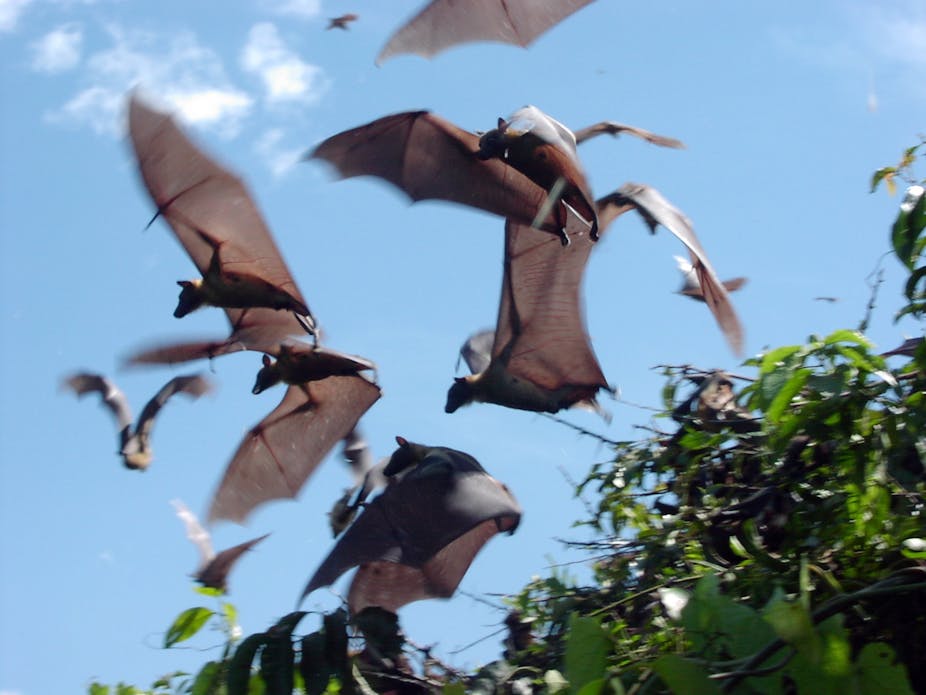Pictures of masked and gowned healthcare workers have become recurrent images as the Ebola virus continues to spread in West Africa. It is the largest Ebola virus outbreak ever recorded, and the death of approximately 70% of patients ensures that the disease remains headline news.
There has been debate as to whether this outbreak is unprecedented in scale, now the concern is over its lack of control. Others are questioning how an outbreak happened.
In an editorial published in the journal PLOS Neglected Tropical Diseases, Daniel Bausch and Lara Schwarz from Tulane and McGill universities argue that these “unforeseen” outbreaks of Ebola are in fact more predictable than first thought. They say the socio-political landscape in West Africa, and particularly in Guinea, Liberia, and Sierra Leone, the nations most affected, is a key driver of the emergence of Ebola. They argue that regional poverty and governance issues force people to plunder the forests for resources, increasing the chance of viruses passing from animals to humans.
The impoverished health-care systems then facilitate Ebola transmission among humans. And the authors make a good point. As part of a team including ecologists, virologists, and social anthropologists, we have argued along much the same lines.
Bats as the source
Genetic evidence suggests the virus causing this outbreak is closely related to those that caused outbreaks in Gabon and the Democratic Republic of Congo in the 2000s, and the genetic differences are those collected during the virus’s journey from those locations. How, then, did it get to West Africa? Bausch and Schwarz pose the question as to why this Zaire ebolavirus strain appeared in West Africa, when another, Taï Forest ebolavirus, was thought to circulate in the region.
As is increasingly the case for emerging viruses, the source of Ebola viruses is presumed to be bats. Evidence remains slight, but data suggests fruit bats are hosts for Ebola. Antibodies against Ebola virus, which usually indicate historical but not current infection, were detected in non-migratory fruit bats in Ghana only a few years before this outbreak. The distributions of these bat species include the nations currently affected by the outbreak.
Unfortunately, methods that detect antibodies are not yet discriminatory enough to determine which of the virus strains was circulating, but the results indicate at least one circulated in West African bats. Whether or not this was due to a wave of infection from central Africa through bats requires further data from bats themselves, which have proven elusive.

How do humans get infected?
If we assume Ebola can go wherever its host bats go, we return to Bausch and Schwarz’s central argument – was this outbreak predictable because of a perfect storm of bat infection and socio-political issues? To some degree, all events have a random component. However, like all probabilistic events, there are things that increase or decrease chances of events occurring, and Ebola outbreaks are no different.
Comparing Ebola outbreaks to another bat-borne virus may be informative. Outbreaks of Nipah virus, which often causes encephalitis and death, are linked to drinking raw palm sap in neighbouring parts of Bangladesh and India. Bat species that host Nipah occur throughout much of Asia, but greater risk of infection appears to be linked to drinking palm sap in these locations. What then links Ebola and bats and humans? One possibility is hunting.
Bats are widely eaten in Africa, with more than a hundred thousand bats eaten annually in Ghana alone. However, the most commonly hunted species does not seem to be infected with Ebola as frequently as other fruit bats. It may be that other, non-bat species occasionally get infected and it is contact with these that leads to human infection. However, evidence from Ebola’s relative, Marburg virus, suggests close contact through mining activities with the putative host, a cave dwelling fruit bat, may lead to human infection and Ebola may be no different.
Is prevention possible?
How then can Ebola virus outbreaks be prevented? If the argument by Bausch and Schwarz is true, there will be no simple solution. No mechanism for transmitting Ebola from bats to humans (such as in the case of drinking palm sap infected with Nipah virus) has been discovered. Vaccines exist, but are at the preliminary stage of development and unlikely to be commercially viable. There is no capacity to deliver the vaccines either, because of the chaotic nature of these countries.
We need a more all-encompassing approach that can reduce contact between humans and bats. Improving health-care infrastructure, restoring degraded habitats and decreasing bat hunting might have conservation and public health benefits. But these all rely on hugely improved governance in those most affected nations, which will be difficult to achieve.

